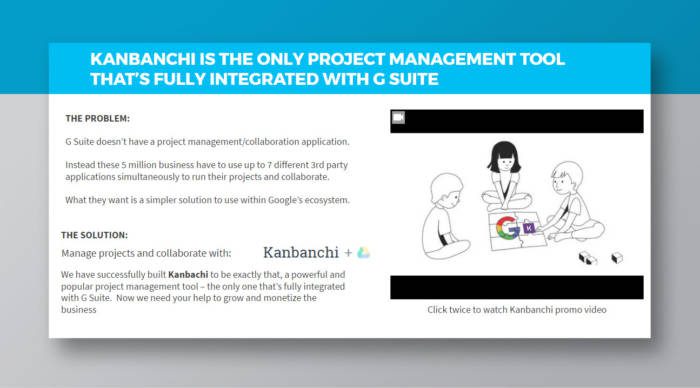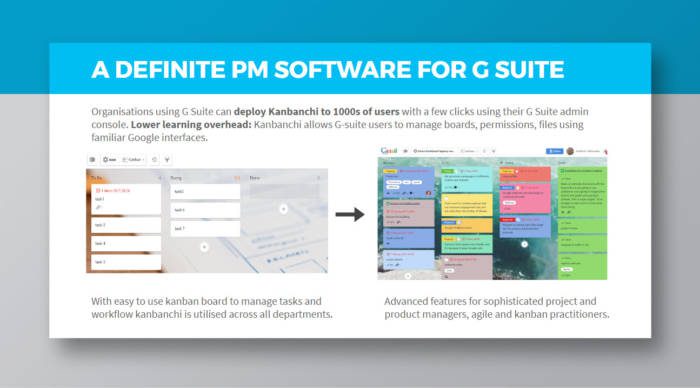
ABC Startup Guide: Taking First Steps
I guess that everyone comes to the idea of running their own business in different ways. For some people it is to fulfil a lifelong passion while for others it may be that they get bored being an employee in someone else’s company. However, we all start with searching of a startup guide of some kind to make sure we haven’t missed some important points.
In my case, I never thought that I would get as deeply and personally involved with a startup business as I have done in recent times with Kanbanchi. Helping to get a brand new product up and running is exhilarating, satisfying and at times just a little bit terrifying.
When preparing to take the first steps on this thrilling but daunting path it is easy to find excuses for delaying. A lack of time and a lack of money are all reasons that people use to avoid turning their startup ideas into reality. However, with most new entrepreneurs it is mainly a simple fear of the unknown that stops them from progressing.
Whatever route you take into this way of working there are sure to be a few defining moments in the early stages that put your resolve to the test. If you can ease past these issues then you will start to feel that your startup gets closer and closer to reality each time.
Is the Idea a Winner?
It might seem that the idea is the one part of the whole startup process that you don’t need to fret about too much. However, there are some points that make this a more thought-provoking issue than you perhaps initially think.
For a start, how sure are you that your idea is original and that it could work? Many of us have an idea that we jealously guard for months or years without ever really putting it to the test.
The longer that you sit on an idea the less likely it is that you eventually do anything about it. On the other hand, you don’t want to dive right in and start your business without giving the idea behind it long and deep thought.
You will want to find out enough about the market and the potential rivals before investing a lot of time and money into the idea. Yet, you will also want to avoid dithering and potentially losing the energy and impetus that could be crucial in getting you up and running.
This means that it is a fine balance you need to achieve between doing research and striking while the iron is hot.
Remember that a quality business idea doesn’t have to be earth-shatteringly original. You could find a twist to an existing formula that sets you apart from the crowd and wins you customers.
For example, Kanbanchi appeared at one stage to be just one of many project management platforms around. However, by integrating it with G Suite we made it unique and something that stands out clearly from the crowd.

Kanbanchi pitch deck slide
Users often call Kanbanchi “Trello for G Suite” and we don’t think it to be something bad now, because it really identifies us and our advantages for our customers.
Is the Business Plan Going to be a Nightmare?
There is a lot of new information, new terms and new skills to learn when you plunge headfirst into the process of starting up a company. Among the worrying new terms that can chill any newcomer’s heart is “business plan”.
Thankfully, this isn’t going to be as much of a nightmare as you might think. Indeed, the process of writing the business plan can be invaluable in forcing you think about issues that might have otherwise only cropped up too late.
In basic terms, your business plan should show the people who might invest in you what the business is about and why it is going to be a success. You need to be completely honest in this document and not over-estimate the profit or impact that you could potentially make.
You will find business case templates online and the process of filling in the information shouldn’t be too demanding. If you have a good idea and have done your research on the market then you probably already have most of the information that needs to go in here.
The business plan typically starts off with an Executive Summary, which it makes sense to write at the end once you have everything clear in your head. After this you will have sections covering the idea, the people in your startup, the financing matters and your funding needs.
I think that it makes sense to keep the business case as simple as you can, as this will make it easy to read and understand. You should read it over several times to avoid any silly errors that could count against you when the decision-makers cast their eyes over it.
The Funding Issues
We can look at the question of funding by breaking it down into two different options; classic funding methods and modern alternatives.
The classic ways of funding a new business include getting a loan from the bank, borrowing from a friend or even using your credit card to get going. More modern funding methods include internet crowd funding sites and peer to peer lending.
There are pros and cons to each of these approaches, meaning that the same way of getting funding won’t work for everyone. Certainly, at the time of writing, getting a bank loan isn’t as easy as it used to be for many people.
This had led to many startups going for crowdfunding and peer to peer lending instead. These are certainly interesting ways of raising funds that you might not otherwise get access to.
Other Common Problems and Concerns
Each new startup entrepreneur is going to have their own list of problems and concerns that they need to address before feeling comfortable going ahead. For instance, you may worry about how you can quickly turn a profit or how to test out a product or service that is completely new.
It is exciting to go through the process of identifying and then resolving problems. With each obstacle that you remove from your path the end result should become clearer and closer.
Personally, our biggest problem in the early days was in working out how to make an impression in such a competitive marketplace. This led to the conclusion that we needed to find a way to provide some sort of unique value that would give us a powerful head start.
As I mentioned earlier, choosing to go for G Suite integration was the move that helped to do this. As soon as we considered this option it immediately became clear that it was the answer to our biggest issue.

Kanbanchi pitch deck slide
Olga Bakulina,
Digital Strategist
